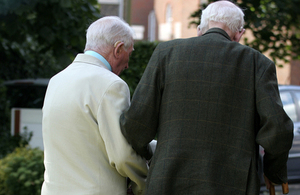Inequalities in health and life expectancies persist
Inequalities in health and life expectancies persist in England and its local authority areas.

A new ONS report produced in conjunction with PHE has been published revealing the scale of inequalities in life expectancy and healthy life expectancy across England, but also within local authority areas.
The data shows that wide inequalities exist not only between the most and least deprived areas of the country; but between the most and least deprived areas within local councils across the country.
This is the first time such an analysis has been done and it will help health professionals, both nationally and within local authority areas, assess, down to very small geographies, where they need to focus their efforts.
The number of years an individual could expect to live in good health (healthy life expectancy) in 2009 to 2013 in England was 63.5 years for males and 64.8 years for females.
Compared with the most deprived areas, the figures for those living in the least deprived areas were higher by 16.7 years for males and 16.8 years for females. This difference was much greater for healthy life expectancy than it was for life expectancy.
The report also concludes that there has been little change in this inequality over the last decade.
Professor John Newton, Chief Knowledge Officer at Public Health England, said:
The findings reinforce the need to address health inequality through public health and prevention as all the evidence shows that the root causes of health inequalities like these lie largely outside the health service.
The other big issue is that inequalities are greater for years of life lived in ill health. People are living longer with one or more diseases like diabetes or cancer that might in the past have been fatal. This is a new situation for care services and has implications for how and where the resources those services need to be allocated in future.
Dr Ann Marie Connolly, Deputy Director, Health Equity and Mental Health, at Public Health England, said:
We know that inequalities in life expectancy emerge from inequalities in the conditions of daily life including people’s incomes, living standards, educational attainment and access to services. These in turn can drive unhealthy behaviours like smoking, poor diet and physical inactivity. Although we’ve seen improvements in physical activity and smoking rates, these have not been enjoyed by all sections of society and so we continue to see these stark differences in outcomes for different communities across England.
Ends
Background information
Contact Dominic Stanley or 0207 654 8039.
Public Health England exists to protect and improve the nation’s health and wellbeing, and reduce health inequalities. It does this through world-class science, knowledge and intelligence, advocacy, partnerships and the delivery of specialist public health services. PHE is an operationally autonomous executive agency of the Department of Health. Twitter: @PHE_uk, Facebook: www.facebook.com/PublicHealthEngland.